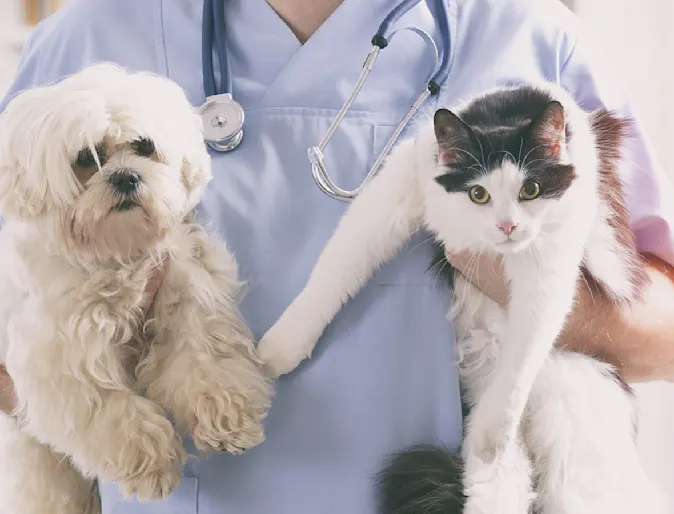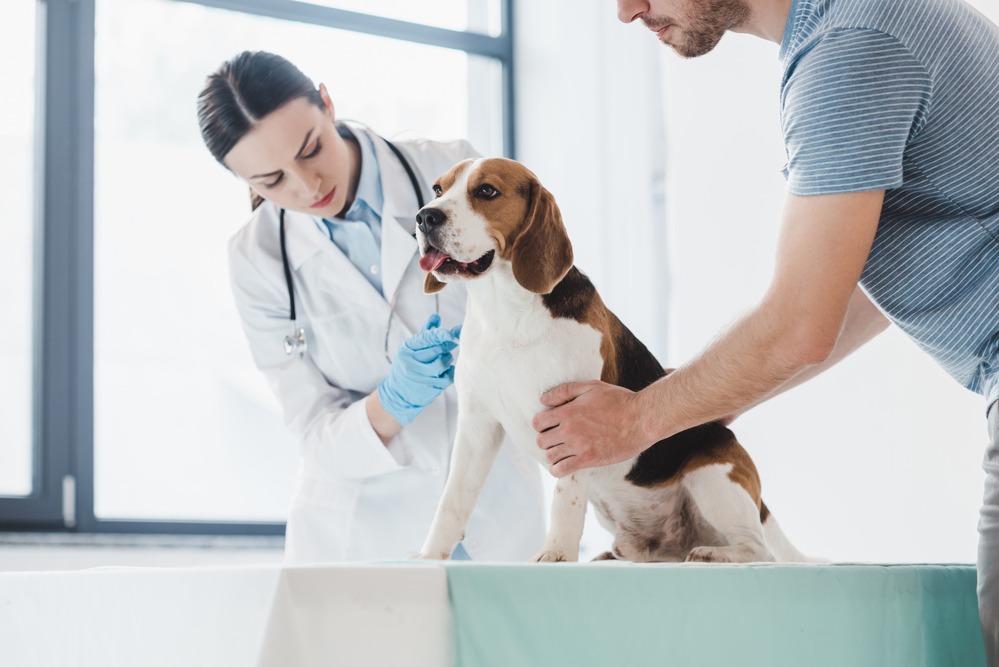Preparing for the Unexpected With animal emergency care bellingham
Preparing for the Unexpected With animal emergency care bellingham
Blog Article
All Concerning Veterinarian Surgical Procedure: Comprehending the Significance of Professional Care for Your Animals
Vet surgical treatment is a critical element of pet dog health care. It incorporates various procedures, from regular optional surgical treatments to immediate treatments. Recognizing the complexities of these surgeries can assist family pet owners make informed decisions. The prep work, implementation, and recovery phases are vital for ensuring the health of animals. With proper understanding, proprietors can navigate the complexities of veterinary care. What aspects should be taken into consideration before a pet undertakes surgical procedure?
Sorts Of Veterinarian Surgeries
When a family pet calls for medical treatment, comprehending the numerous kinds of vet surgical treatments can aid animal proprietors make informed decisions. Veterinary surgeries can be generally classified right into 3 major types: elective, immediate, and emergency situation surgical treatments. Optional surgical procedures, such as spaying or neutering, are prepared procedures that are not immediately serious. Immediate surgical treatments, like those for international body removal, must be done soon yet are not serious in the minute. Emergency surgical treatments, such as those attending to serious trauma or interior bleeding, are crucial and require prompt attention.Additionally, surgeries can differ in intricacy, varying from minimally intrusive laparoscopic treatments to a lot more substantial open surgeries. Each type of surgical procedure brings its own dangers and recuperation processes. Comprehending these classifications permits family pet owners to take part in meaningful discussions with veterinarians, resulting in better end results for their precious pets.
Planning for Your Pet's Surgery
Preparing for a pet dog's surgery involves a thorough checklist to ensure all basics are covered. Efficient interaction with the veterinarian is essential for comprehending the treatment and any kind of required pre-operative steps - emergency vet near me. Additionally, having clear post-operative treatment directions will certainly help owners give the most effective support for their recuperating pets
Pre-Surgery Checklist Basics
Assuring a smooth medical experience for a pet requires careful preparation and interest to information. A pre-surgery checklist is important for family pet owners to follow. Initially, verifying the arranged surgical treatment day and time is vital. Owners ought to likewise verify that their animal has actually fasted according to the vet's instructions, usually for 8-12 hours before surgical procedure. Gathering necessary clinical documents, consisting of inoculation background, is essential for the veterinarian's testimonial. It is likewise advisable to prepare a comfortable room in your home for the pet dog's healing after surgery. Owners must have a plan for transportation to and from the veterinary facility, making certain that the family pet is safe and secure and comfortable throughout the journey. Following these actions can significantly boost the surgical experience.
Interacting With Your Veterinarian

Reliable communication with the vet is necessary for a successful medical experience for pets. Proprietors should be prepared to review their pet's case history, including any type of pre-existing problems, medications, and allergic reactions. This information aids the veterinarian analyze risks and customize the medical plan appropriately. Additionally, animal owners must ask inquiries regarding the treatment, anesthesia, and expected outcomes to assure they fully comprehend the procedure. Making clear any kind of uncertainties can reduce anxiousness for both the animal and the proprietor. It is additionally vital to communicate any kind of behavior modifications or concerns observed in the animal leading up to the surgical treatment. Ultimately, clear discussion fosters depend on and partnership, guaranteeing that animals receive the very best feasible care during their medical trip.
Post-Operative Treatment Directions
After discussing the operation with the vet, pet proprietors need to concentrate on post-operative care instructions to assist in a smooth healing for their pet dogs. These instructions normally consist of keeping track of the surgical website for indications of infection, such as inflammation or discharge. Animals might need to be kept one's cool and restricted to stop extreme movement that can interrupt healing. Pain management is important, so owners need to comply with the vet's assistance on carrying out medications. Additionally, nutritional constraints may be advised to avoid gastrointestinal trouble. Routine follow-up appointments are very important to assure correct healing and deal with any problems. By adhering to these post-operative care guidelines, pet owners can greatly add to their pet dog's recuperation and overall well-being.
The Surgery Explained
The surgery for pets incorporates crucial steps that guarantee their security and healing. Pre-surgery preparations are crucial for lessening risks, while post-operative care standards play an essential duty in promoting recovery. Recognizing these elements helps pet proprietors browse the surgical experience much more efficiently.
Pre-Surgery Preparations
Before a pet goes through surgery, numerous essential preparations have to occur to guarantee a safe and effective procedure. First, a complete vet examination is vital to assess the animal's overall wellness and identify any type of possible threats. This might include blood examinations, imaging, or various other diagnostics. The vet will also talk about anesthesia alternatives customized to the pet's particular demands. Furthermore, pet dog owners are normally instructed to withhold food and water for a specified time before surgery to minimize the threat of issues throughout anesthetic. It is essential for owners to provide a total clinical history, including any type of medications or allergies, making sure the medical team has all required information. Proper interaction and adherence to pre-surgery standards can greatly improve the outcome of the treatment.
Post-Operative Treatment Standards
Proper post-operative care is crucial for ensuring an animal's healing complying with surgery. After the treatment, animals must be monitored very closely for any type of indicators of complications, such as excessive blood loss, swelling, or unusual habits. It is very important to comply with the vet's guidelines concerning drugs, including painkiller and prescription antibiotics. Family pets must be kept you could try these out in a quiet, comfy atmosphere to reduce tension and advertise healing. Limiting activity is vital; short, leashed walks may be required, yet jumping or running ought to be stayed clear of. Routine follow-up consultations need to be arranged to assess the healing procedure. In addition, the surgical site needs to be kept tidy and completely dry, with any indications of infection reported to a veterinarian without delay. Complying with these standards enhances healing end results.
Anesthetic and Pain Administration
Efficient anesthesia and discomfort administration are necessary components of veterinary surgical treatment, ensuring that pet dogs remain comfy and risk-free throughout the treatment. Veterinarians examine each pet's specific requirements, taking into consideration factors such as age, weight, health and wellness condition, and the kind of surgical treatment being performed.Anesthesia protocols usually include a combination of pre-anesthetic medications, induction representatives, and inhalant anesthetics, permitting exact control over the animal's degree of awareness. Surveillance during surgical treatment is important; vets continuously observe essential indicators to address any kind of prospective complications promptly.Pain administration approaches may involve opioids, non-steroidal anti-inflammatory medicines (NSAIDs), and regional anesthetics, customized to the family pet's specific scenario. This complex strategy assists reduce discomfort and promotes a smoother medical experience. By focusing on efficient anesthetic and discomfort management, veterinary professionals improve the total welfare of family pets going through operations, ensuring they receive the highest requirement of care.
Post-Operative Care and Recovery
Complying with surgical procedure, the emphasis shifts to post-operative treatment and recovery, which is important for ensuring a pet's safe go back to regular tasks. Throughout this duration, family pets need a quiet, comfortable atmosphere to help healing. Proprietors should closely check their family pets for any kind of signs of pain or unusual behavior.Veterinary standards commonly consist of specific directions associated with drug management, wound treatment, and nutritional modifications. It is her response crucial to stick to these suggestions to lessen issues and advertise healing. Family pets may require to be restricted from vigorous activities, such as running or jumping, throughout their recuperation period (canine tplo surgery).Regular follow-up appointments with the veterinarian enable tracking of the pet's progression and timely changes to the care strategy. Giving psychological assistance and friendship can likewise enhance a family pet's recovery experience, aiding to minimize anxiety and anxiety. On the whole, attentive post-operative care plays a substantial role in attaining an effective recuperation
Acknowledging Issues After Surgery
Just how can family pet owners recognize difficulties after surgery? Understanding of certain signs is essential for making sure the well-being of pets during healing. Usual indicators include extreme swelling, redness, or discharge at the medical website, which may signify infection. Additionally, relentless pain, indicated by whimpering or hesitation to move, ought to motivate instant attention. Modifications in cravings or water intake can additionally show problems; a decline in these habits top veterinary hospitals might indicate pain or distress.Moreover, family pet proprietors should check their pet dogs for any unusual habits, such as sleepiness or difficulty breathing, as these can be signs of serious concerns. Vomiting or diarrhea following surgical procedure may require urgent veterinary examination. Acknowledging these difficulties early can substantially influence a pet dog's healing procedure, highlighting the value of alertness and timely communication with a veterinarian for any kind of worrying signs and symptoms.
The Duty of Vet Specialists in Surgical Care
Vet experts play a vital role in making sure the safety and success of procedures for family pets, especially adhering to surgical procedure when checking and care are critical. These professionals include vets, vet specialists, and assistance team, all of whom add specialized abilities to the surgical process.Before surgical procedure, veterinarians carry out extensive evaluations to examine the animal's health and wellness, making sure that any hidden conditions are taken care of. During the treatment, the medical team supplies anesthesia, preserves sterilized environments, and checks crucial signs, very important for minimizing risks.Post-operative care is similarly significant; vet professionals observe for issues, manage discomfort, and overview owners on recovery practices. Their proficiency allows them to acknowledge very early signs of distress or infection, making sure prompt treatment. Ultimately, the joint efforts of veterinary professionals in medical treatment foster a secure atmosphere, promoting the wellness of pet dogs throughout the surgical journey.

Regularly Asked Inquiries
Just how Do I Select the Right Vet Cosmetic Surgeon for My Pet dog?
Choosing the best vet surgeon entails investigating qualifications, checking out evaluations, and assessing the clinic's setting. It is important to show on the cosmetic surgeon's experience with certain treatments and their interaction style when deciding.
What Prevail Misconceptions About Veterinarian Surgeries?
Common false impressions about veterinarian surgical procedures consist of beliefs that they are always risky, unnecessary, or just for emergency situations. Numerous animal proprietors ignore the benefits of preventative treatments and the skill associated with vet surgical care.
Just How Much Will My Pet dog's Surgical procedure Expense?
The cost of a family pet's surgical treatment can vary significantly based upon elements such as the sort of treatment, the veterinarian's experience, and geographic area (24 hour vet near me). Commonly, expenditures range from a few hundred to numerous thousand dollars

Can My Pet Dog Eat Before Surgery?
Prior to surgical procedure, it is typically encouraged that animals avoid from consuming for a specific period. This fasting helps in reducing the danger of problems throughout anesthesia. Owners ought to consult their vet for accurate directions customized to their animal's needs.
Suppose My Pet Has Pre-Existing Health Issues?
When an animal has pre-existing wellness conditions, it's essential for the vet to examine these aspects before surgical procedure. This assessment warranties suitable precautions are taken, lessening dangers and enhancing the pet dog's general security throughout the procedure.
Report this page